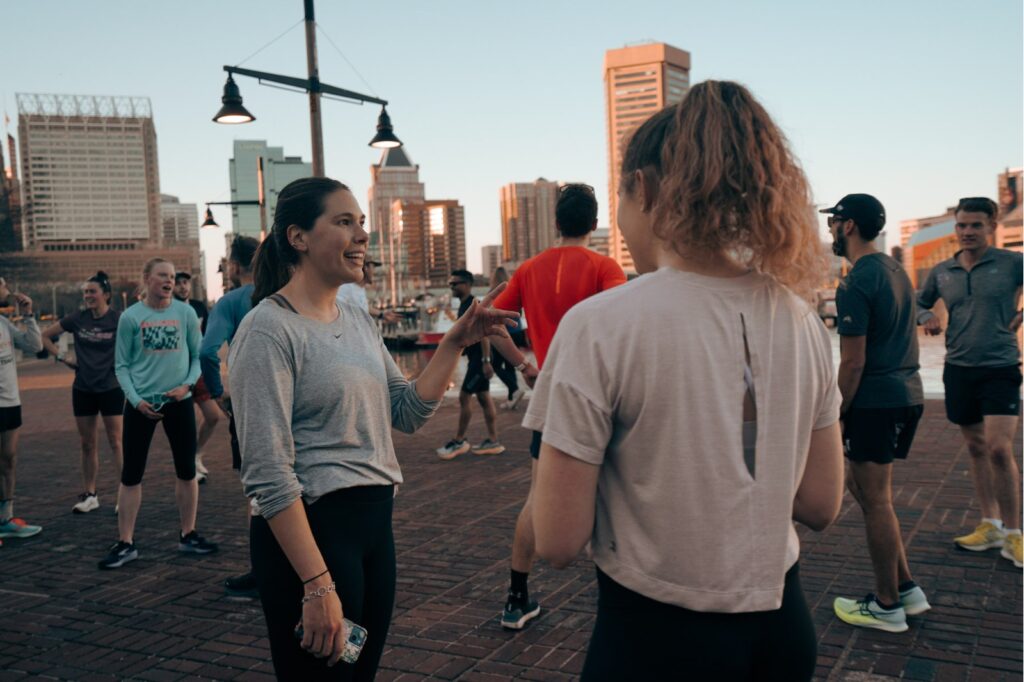
We independently review everything we recommend. When you buy through our links, we may earn a commission.
Four things to drop from your routine
Opinions backed by science… or a lack of science
If one of these does work for you, keep at it
SHANNON: Here we are, a month into 2024. My Instagram feed is full of Ins and Outs — things that runners want to do more/less of. The running community is thinking big about the year ahead with anything from foam rolling and chugging green powders to investing in a Theragun.
The options for modalities that promise better performance and recovery are endless. So what’s worth it, and what’s a waste of time? Only you can answer that for you, but what I will tell you are the five things that I don’t do as a physical therapist.

SHANNON: I’m usually trying to sneak out the door to get my run in at 5:30 am before my kids wake up. I admittedly don’t budget enough time to get a few minutes of stretching in. However, when it comes to running, static stretches (think seated hamstring stretches or standing quad stretches) aren’t all that helpful for runners. They haven’t been shown to prevent injury in the literature.
If anything, pre-run static stretching can actually decrease muscular power in high-performance events. So what should we do instead? Think dynamic warm-up movements like leg swings, high knees, and A/B skips. These movements take your joints through the range of motion while also promoting blood flow to the area.
SHANNON: Meh, this one just plain hurts and, to me, isn’t worth the benefit. There are studies that show foam rolling can increase flexibility by 4% and can marginally help sprint performance, and research also suggests that foam rolling reduces the perception of muscle pain by 6% after a run.
Personally, those small gains aren’t enough to justify how much I hate my life while doing it. So if it feels good, go for it. It won’t hurt. In the meantime, I just use it to crack my back.

SHANNON: Research just isn’t overly supportive of using ice for injuries. It doesn’t consistently show that it helps repair muscle damage or reduce swelling. Instead, the cold temperature numbs the pain temporarily, and there’s a small amount of increased blood flow superficially, but that’s about it. I’ve found compression socks or sleeves to be much more effective at managing swelling.
SHANNON: Again, the evidence just isn’t there. Kinesiotape is theorized to work by producing a tactile stretch that cues muscles to activate with more efficient timing. But the reality is it doesn’t do what it’s supposed to do. Your muscles “get used” to the tactile input the same way that we forget we’re wearing the clothes on our backs after a while. Then, the muscles just go back to their usual pattern. The tape is also super stretchy, so it doesn’t provide any structural support either. It looks really cool, but the science doesn’t back it.

SHANNON: Okay, actually, you should definitely do this one. There’s tons of research that shows progressive lifting is effective at preventing injuries, helping with rehab, and improving running performance. I’m just terrible at remembering to do it. Do as I say, not as I do.
Have something to say? Leave a Comment

Shannon is a physical therapist who had never heard of a “tempo” until she signed up for her first marathon at the age of 30. Now she’s determined to chip away at her PRs while using her expertise to empower young female athletes. When she’s not running, you can find her chasing her two toddlers, watching reality TV, or obsessively scrolling Zillow.
More from Shannon
Can you comment on, or point me in the right direction about mild stability shoes? I’ve been using them forever, starting with the ASICS 2100 series, GT’s, and kayano’s, but recently tried neutrals with some success. Just wondering if I should abandon them and lo9inf for an expert take on them.
Thanks,
Jason G